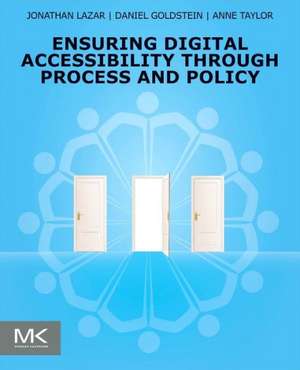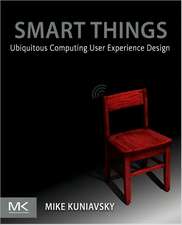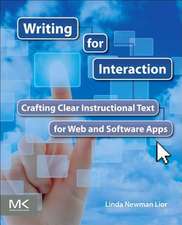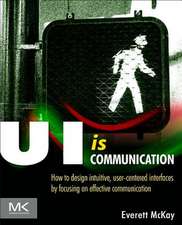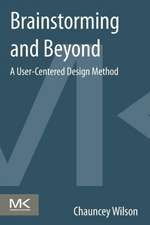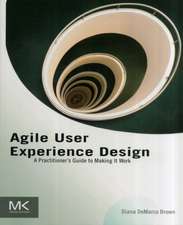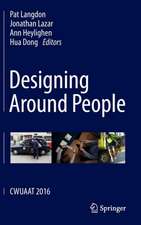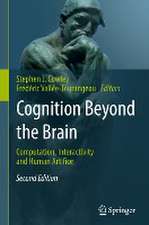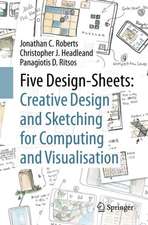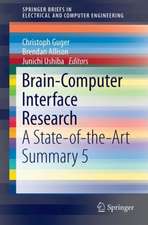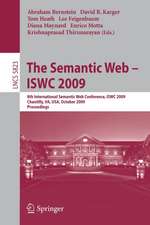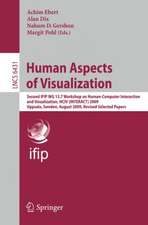Ensuring Digital Accessibility through Process and Policy
Autor Jonathan Lazar, Daniel F. Goldstein, Anne Tayloren Limba Engleză Paperback – 4 iun 2015
This combination of skills from the three authors—law, technical, and research, with experience in both corporate, government, and educational settings, is unique to this book, and does not exist in any other book about any aspect of IT accessibility. The authors’ combination of skills marks a unique and valuable perspective, and provides insider knowledge on current best practices, corporate policies, and technical instructions. Together, we can ensure that the world of digital information is open to all users.
- Learn about the societal and organizational benefits of making information technology accessible for people with disabilities
- Understand the interface guidelines, accessibility evaluation methods, and compliance monitoring techniques, needed to ensure accessible content and technology
- Understand the various laws and regulations that require accessible technology
- Learn from case studies of organizations that are successfully implementing accessibility in their technologies and digital content
Preț: 291.68 lei
Preț vechi: 324.04 lei
-10% Nou
Puncte Express: 438
Preț estimativ în valută:
55.81€ • 58.28$ • 46.09£
55.81€ • 58.28$ • 46.09£
Carte tipărită la comandă
Livrare economică 08-22 aprilie
Preluare comenzi: 021 569.72.76
Specificații
ISBN-13: 9780128006467
ISBN-10: 0128006463
Pagini: 246
Dimensiuni: 191 x 235 x 13 mm
Greutate: 0.5 kg
Editura: ELSEVIER SCIENCE
ISBN-10: 0128006463
Pagini: 246
Dimensiuni: 191 x 235 x 13 mm
Greutate: 0.5 kg
Editura: ELSEVIER SCIENCE
Cuprins
1. Introduction to Accessible Technology2. The History of Access Technology 3. The Discriminatory Impact of Digital Inaccessibility4. Technical Standards for Accessibility5. U.S. Laws and Lawsuits6. International Disability Law7. Regulations8. Evaluation Methods and Measurement9. Compliance Monitoring Policies and Procurement10. Case Studies of Success11. The Need for Culture Change and Looking Ahead to the Future
Recenzii
"Lazar, Goldstein, and Taylor are a uniquely qualified trio, combining expertise in legal accountability, human-computer interaction, and the perspective of corporations regarding accessibility. Together they offer theoretical and pragmatic insights into why and how the digital world should be accessible, as well as the cultural changes that need to occur to precipitate full inclusion." --Michael Stein, Executive Director, Harvard Law School Project on Disability; Visiting Professor, Harvard Law School; Extraordinary Professor, University of Pretoria Faculty of Law, Centre for Human Rights
"Information technology has enormous potential to make our society more inclusive. Realizing that potential takes a lot of hard work, not just on the technology itself, but also on the legal and policy framework within which it operates. This book lets us learn from those who have been doing that work, a rare opportunity!" --Clayton Lewis, Professor of Computer Science and Fellow of the Institute of Cognitive Science, University of Colorado, Boulder
"Ensuring Digital Accessibility is a comprehensive yet easy to follow guide to a fast-moving area of the law. It will be of great use to lawyers, software and web developers, CIOs, and policymakers." --Michael Waterstone, J. Howard Ziemann Fellow and Professor of Law, Loyola University Law School
"This book is a must read for anyone interested in understanding what it means for technology to be fully accessible to individuals with disabilities. The book will be invaluable to a broad audience because it is chock full of technical and legal resources but describes those resources in a way that is understandable to a lay audience. I will rely heavily on this book when I next update my teaching materials in the field of disability discrimination and look forward to its publication." --Ruth Colker, Distinguished University Professor and Heck-Faust Memorial Chair in Constitutional Law, Ohio State University
"Ensuring Digital Accessibility is a wonderful explanation of why accessibility to all kinds of technology including computers, smartphones, e-books, and web sites, is so beneficial to society. Certainly the recipients of access benefit, but so do the providers of the information by reaching a wider and more diverse audience. Providing access to users with disabilities is not only the right thing to do, it is the smart thing to do." --Richard E. Ladner, Professor, Department of Computer Science and Engineering, University of Washington
"The authors of this book represent a team that can take a unique perspective on digital accessibility. Dr. Lazar is one of the few academics I know who has taken the time to write multiple books that take academic knowledge about accessibility and organize it into clear and accessible guidelines for the design of digital artifacts. Dan Goldstein is a civil rights lawyer with on the ground experience about what it takes to enforce and create accessibility standards thanks to his leadership in multiple successful lawsuits. Anne Taylor has hands on experience guiding others in the design and use of accessible technologies. Together they are sure to present a practical and grounded perspective on what it takes to ensure digital accessibility." --Jennifer Mankoff, Associate Professor, Human Computer Interaction Institute, Carnegie Mellon University
"...an excellent work by two IT experts and one legal expert...an outstanding book for readers who are interested in the fundamentals of accessibility in the digital world. It is a badly needed book for the general audience." --Computing Reviews
"Information technology has enormous potential to make our society more inclusive. Realizing that potential takes a lot of hard work, not just on the technology itself, but also on the legal and policy framework within which it operates. This book lets us learn from those who have been doing that work, a rare opportunity!" --Clayton Lewis, Professor of Computer Science and Fellow of the Institute of Cognitive Science, University of Colorado, Boulder
"Ensuring Digital Accessibility is a comprehensive yet easy to follow guide to a fast-moving area of the law. It will be of great use to lawyers, software and web developers, CIOs, and policymakers." --Michael Waterstone, J. Howard Ziemann Fellow and Professor of Law, Loyola University Law School
"This book is a must read for anyone interested in understanding what it means for technology to be fully accessible to individuals with disabilities. The book will be invaluable to a broad audience because it is chock full of technical and legal resources but describes those resources in a way that is understandable to a lay audience. I will rely heavily on this book when I next update my teaching materials in the field of disability discrimination and look forward to its publication." --Ruth Colker, Distinguished University Professor and Heck-Faust Memorial Chair in Constitutional Law, Ohio State University
"Ensuring Digital Accessibility is a wonderful explanation of why accessibility to all kinds of technology including computers, smartphones, e-books, and web sites, is so beneficial to society. Certainly the recipients of access benefit, but so do the providers of the information by reaching a wider and more diverse audience. Providing access to users with disabilities is not only the right thing to do, it is the smart thing to do." --Richard E. Ladner, Professor, Department of Computer Science and Engineering, University of Washington
"The authors of this book represent a team that can take a unique perspective on digital accessibility. Dr. Lazar is one of the few academics I know who has taken the time to write multiple books that take academic knowledge about accessibility and organize it into clear and accessible guidelines for the design of digital artifacts. Dan Goldstein is a civil rights lawyer with on the ground experience about what it takes to enforce and create accessibility standards thanks to his leadership in multiple successful lawsuits. Anne Taylor has hands on experience guiding others in the design and use of accessible technologies. Together they are sure to present a practical and grounded perspective on what it takes to ensure digital accessibility." --Jennifer Mankoff, Associate Professor, Human Computer Interaction Institute, Carnegie Mellon University
"...an excellent work by two IT experts and one legal expert...an outstanding book for readers who are interested in the fundamentals of accessibility in the digital world. It is a badly needed book for the general audience." --Computing Reviews
